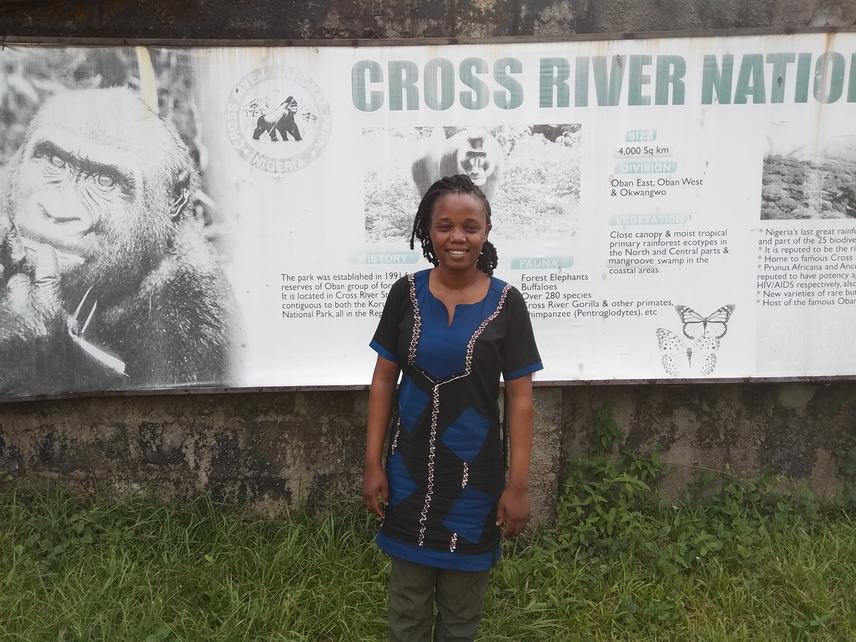Adeola Oluwakemi Ayoola
The Red-Eared Guenon (Cercopithecus erythrotis camerunensis), endemic to the Cross River region spanning southeastern Nigeria and southwestern Cameroon, faces severe threats from habitat destruction and hunting. This project aims to address the conservation needs of this species, focusing on Nigeria's Cross River National Park (CRNP), which remains a critical habitat for various endangered primates. While the CRNP is recognized for its rich biodiversity, conservation efforts have historically prioritized other flagship species like the Cross-River Gorilla and Nigeria-Cameroon Chimpanzee, leaving the Red-Eared Guenon relatively under-studied despite its vulnerable status.

Reconnisance survey of red-eared guenon at Cross River National Park. ©Ranger Uche.
Our project is structured around three primary objectives. First, it seeks to assess C. e. camerunensis within CRNP, evaluating population distribution, identifying current threats, and informing habitat management practices. This will involve field surveys and the integration of geographic occurrence data with Species Distribution Models (SDM). By employing SDM alongside direct field observations, the project will pinpoint high-priority conservation areas and project potential habitat changes under future climate scenarios. This data-driven approach will allow us to predict shifts in habitat suitability across time, facilitating preemptive conservation measures.
Second, it emphasizes community engagement through conservation education programs aimed at raising awareness among local populations about the ecological importance of the Red-Eared Guenon and its habitat. It intends to foster a community-led stewardship model for CRNP’s biodiversity by involving communities in educational workshops and conservation activities, thereby ensuring a more sustainable impact.
Finally, through our ecological and community-centered activities, it will develop a conservation action plan, specifically targeting the preservation of C. e. camerunensis. This action plan will inform local authorities and conservation bodies on the practical steps needed to protect this primate’s habitat effectively, with potential applications to other regions within its range.